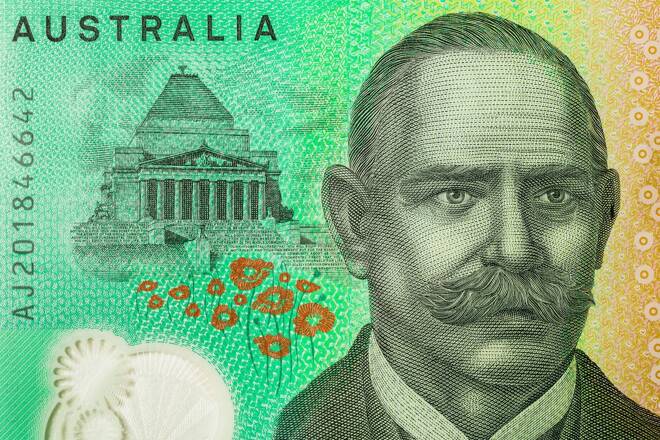Advertisement
Advertisement
AUD to USD Forecast: Will Aussie Dollar Rally on Rising Inflation Expectations?
By:
Key Points:
- On Thursday, July 11, Australian consumer inflation expectations will be in focus.
- Later in the session on Thursday, the crucial US CPI Report could cement investor expectations of a September Fed rate cut.
- Investors should also track FOMC Member commentary for reaction to the US CPI Report.
Will the Aussie dollar rally due to rising consumer inflation expectations?
Australian Consumer Inflation Expectations and the RBA
On Thursday, July 11, Australian consumer inflation expectations will put the AUD/USD and the RBA in focus.
Economists forecast that consumer inflation expectations will increase to 4.5% in July, up from 4.4% in June.
Higher-than-expected consumer inflation expectations could signal a pickup in consumer spending. Consumers bring forward their spending plans if they expect prices to rise. Upward trends in consumer spending could drive demand-driven inflation and pressure the RBA to hike interest rates.
Historical consumer inflation expectation trends highlight the ongoing challenge for the RBA to tame inflation. Central banks, including the RBA, consider consumer inflation expectations predictors of headline consumer price inflation.
Furthermore, higher-than-expected consumer inflation expectations push the AUD/USD toward $0.68. However, the US Economic calendar will also influence the near-term trends.
US CPI Report and the Fed Rate Path
Later in the session on Thursday, the crucial US CPI Report will impact buyer demand for the US dollar.
Economists forecast the US annual inflation rate to fall from 3.3% in May to 3.1% in June. More significantly, economists predict the core inflation rate to remain unchanged at 3.4% in June.
The Fed may need core inflation to drop below 3% to gain confidence that inflation is sustainably moving toward the 2% target.
During testimony on Tuesday, Fed Chair Powell said that the US economy was progressing well toward the 2% target. However, he did not give a timeline for a Fed rate cut before the US CPI Report, highlighting the CPI Report’s significance.
Other US data to consider on Thursday includes the weekly jobless claims report. Can a waning US labor market cause concern within the Fed?
US Continuing Jobless Claims Signal a Deteriorating US Labor Market
Economists forecast US continuing jobless claims to increase from 1,858k on June 22 to 1,860k in the week ending June 29.
A larger-than-expected rise in continuing jobless claims may incentivize the Fed to discuss cutting interest rates in Q3 2024.
Weaker labor market conditions affect wage growth and reduce disposable income. Falling disposable income may curb consumer spending and dampen demand-driven inflation. A softer inflation outlook could enable the Fed to cut interest rates.
On Tuesday, July 9, Fed Chair Powell noted a cooling labor market during testimony on Capitol Hill.
Arch Capital Global Chief Economist Ross Parker reacted to Powell’s testimony, saying,
“The Fed has finally explicitly acknowledged that the risks to price stability and maximum employment have come much more into balance. They now need to manage both of those risks, not solely inflation. […]. This is what I’ve been waiting to hear from Powell for some time now and means they’re teeing up the first rate cut – which still isn’t likely to happen until Sept.”
With the US labor market and inflation in focus, investors should also monitor FOMC Member speeches. Reactions to the economic data and views on the timeline for a Fed rate cut need consideration.
Short-Term Forecast: Bullish
Near-term AUD/USD trends hinge on Aussie consumer inflation expectations numbers and the US CPI Report. Higher-than-expected Aussie inflation numbers and softer-than-expected US inflation figures could tilt monetary policy divergence toward the Aussie dollar. The RBA is considering raising interest rates, while the Fed is eying an interest rate cut.
Investors must remain alert when considering the influence of inflation on monetary policy. Stay ahead of market movements with real-time updates and expert insights on Australian economic trends and the AUD/USD. Keep up-to-date with our latest analysis and insights to navigate the forex markets effectively.
AUD/USD Price Action
Daily Chart
The AUD/USD sat comfortably above the 50-day and 200-day EMAs, confirming the bullish price trends.
An AUD/USD breakout from the $0.67500 handle could signal a move to the $0.67967 resistance level.
Aussie consumer inflation expectations and the US CPI Report require consideration.
Conversely, an AUD/USD break below the $0.67003 support level could give the bears a run at the 50-day EMA.
With a 14-period Daily RSI reading of 65.90, the AUD could break above the $0.67967 resistance level before entering overbought territory.
About the Author
Bob Masonauthor
With over 28 years of experience in the financial industry, Bob has worked with various global rating agencies and multinational banks. Currently he is covering currencies, commodities, alternative asset classes and global equities, focusing mostly on European and Asian markets.
Advertisement
